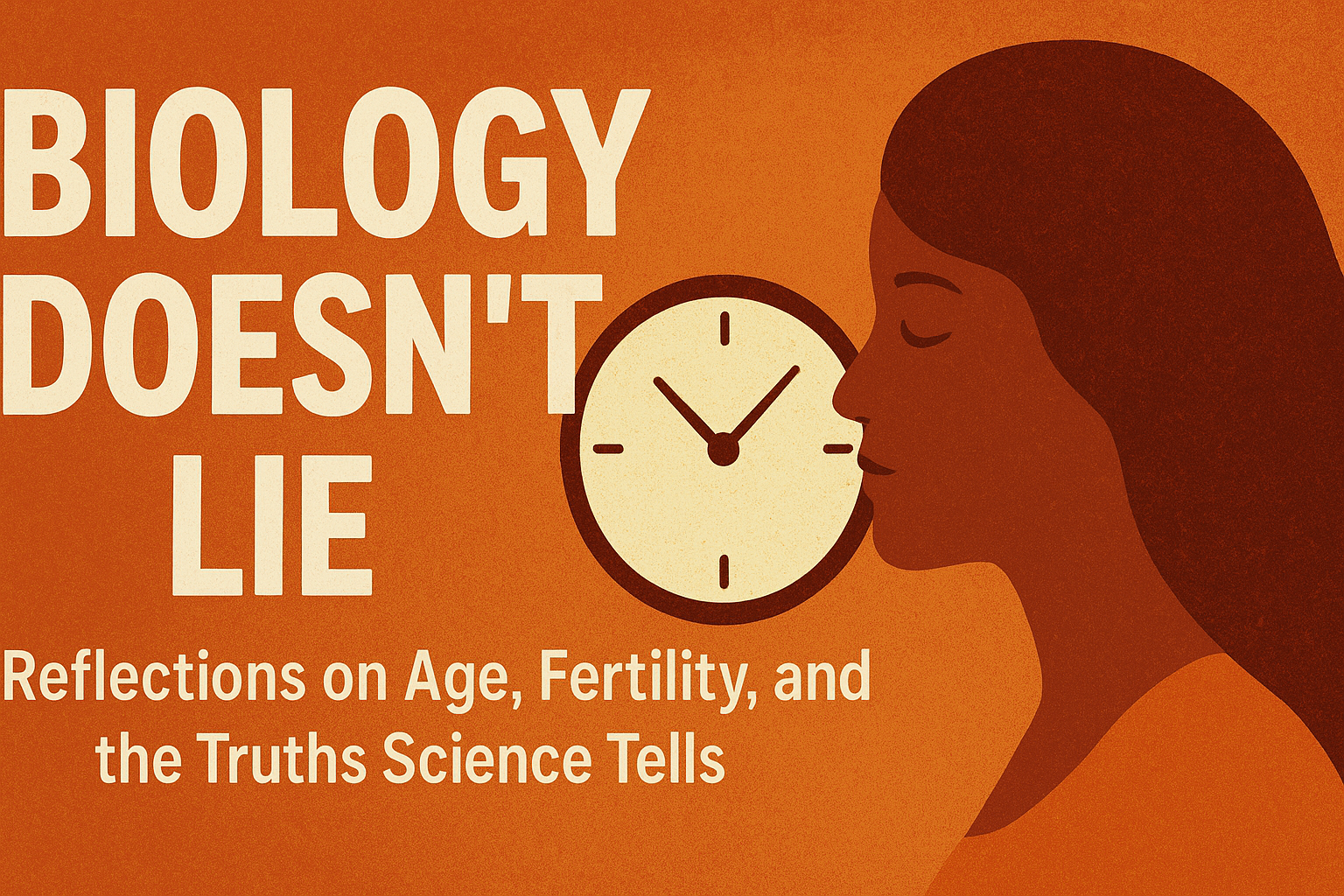Sometimes I wonder if it is just the environment I’m in. Other times, I perceive it is the same virtually everywhere. Certain truths, especially those tied to biology, are uncomfortable to hear, and among them, one of the most hotly contested is that, as women grow older, their chances of natural conception decrease, pregnancy becomes riskier, and the likelihood of complications rises.
Now, let’s pause here. This is not an attack on women, nor is it a weapon of misogyny. In fact, it is an act of respect, to recognize the biological marvel of the female body and its natural rhythms without sugarcoating the limits that nature itself imposes. Science has never been about flattery; it has always been about observation, patterns, and facts.
The Fertility Timeline: Numbers Don’t Lie
Biologically, women are born with a finite number of eggs, around 1 to 2 million at birth. By puberty, that number drops to about 300,000 to 400,000, and over a woman’s reproductive years, only about 400 to 500 eggs will ever be ovulated. The decline is gradual at first but becomes steeper after the age of 35.
In the early 20s, a woman’s chance of conceiving each month is about 25% to 30%. By age 40, that chance drops to around 5% or less.
These aren’t arbitrary statistics, they reflect the natural aging of both egg quantity and quality. The older the egg, the more likely it is to develop chromosomal abnormalities, which leads to higher risks of miscarriage, stillbirth, or congenital conditions like Down syndrome.

Complications: The Silent Weight of Age
Pregnancy at an advanced maternal age is medically defined as pregancy at 35 years and above. Doctors don’t use that cutoff to stigmatize women but to highlight the risks that data consistently reveals. Older mothers face higher rates of:
-
Gestational diabetes
-
High blood pressure and preeclampsia
-
Preterm birth
-
Cesarean delivery
-
Placenta complications
For example, the risk of gestational diabetes is almost twice as high for women over 35 compared to those in their 20s. Similarly, the likelihood of developing preeclampsia increases significantly with age, endangering both mother and child.
This doesn’t mean older women can’t or shouldn’t have children. Millions do, with success and joy. But it does mean the journey is often more complicated and requires closer monitoring and medical intervention.
Why We Resist These Truths
So why, despite clear evidence, do some resist these biological facts? I believe it’s partly emotional, partly cultural. For decades, society has placed immense pressure on women. At first, it was to marry early, then to delay for careers, and finally to somehow have it all perfectly timed. The result? When science speaks bluntly about age and fertility, it can feel like judgment, even when it isn’t.
No one wants their biological clock reduced to a countdown. It’s personal, it’s sensitive, and sometimes it clashes with modern ideals of independence, equality, and choice. But pretending the science isn’t true doesn’t make it disappear.
Hope in Medicine and Technology
Here’s where the story shifts from inevitability to possibility. Modern medicine has developed tools to extend fertility options. Egg freezing allows younger women to preserve healthy eggs for use later in life. In-vitro fertilization offers chances where natural conception fails. Screening technologies like Preimplantation Genetic Testing help detect chromosomal abnormalities before implantation, reducing risks.
Yet, even with these advances, age still plays a role. IVF success rates, for instance, are much higher in women under 35 compared to women in their 40s. Technology can help, but it cannot fully rewrite biology.
The Courage of Acceptance
Maybe the hardest part of this conversation isn’t the science but it’s acceptance. It takes courage to face facts that clash with personal dreams. It takes strength to separate truth from perceived attack. And it takes wisdom to plan life’s milestones not around societal pressure, but around an honest understanding of what the body can and cannot do.
This is not about rushing women into choices. It’s about empowering them with knowledge so that if they choose to wait, they do so with clear eyes and informed decisions. It’s about recognizing that biology doesn’t lie, and pretending otherwise does more harm than good.
So What?
At the heart of it, nature has its own rhythm; beautiful, unyielding, and sometimes unfair. The female body is a marvel of creation, capable of nurturing new life, but it is not limitless. Fertility, like every gift, comes with an expiration window.
What I’ve learned is that, to speak these truths is not cruelty, but care. To ignore them is to risk disappointment. And to face them with honesty is to give every woman the chance to write her own story, guided not by myths or pressures, but by the wisdom of science.
Because in the end, the real empowerment lies not in fighting biology, but in understanding it.
Resources
- American College of Obstetricians and Gynecologists – Having a Baby After Age 35: How Aging Affects Fertility and Pregnancy
- Centers for Disease Control and Prevention – Infertility and Reproductive Health
- National Institutes of Health – Female Fertility and the Impact of Age
- World Health Organization – Maternal Health and Risks Associated with Pregnancy at Advanced Age
- Mayo Clinic – Pregnancy Over Age 35: Healthy Moms, Healthy Babies
Posted Using INLEO